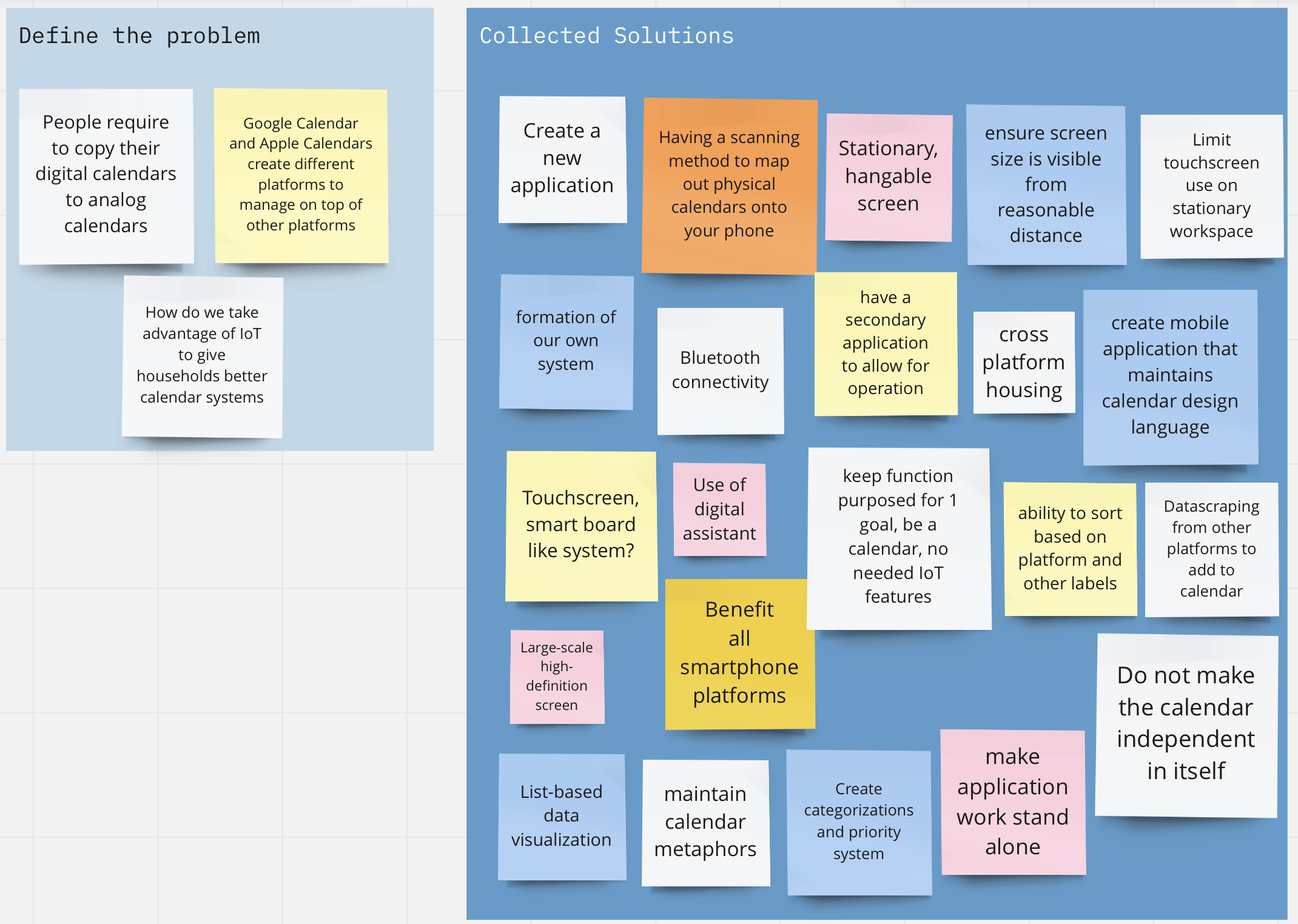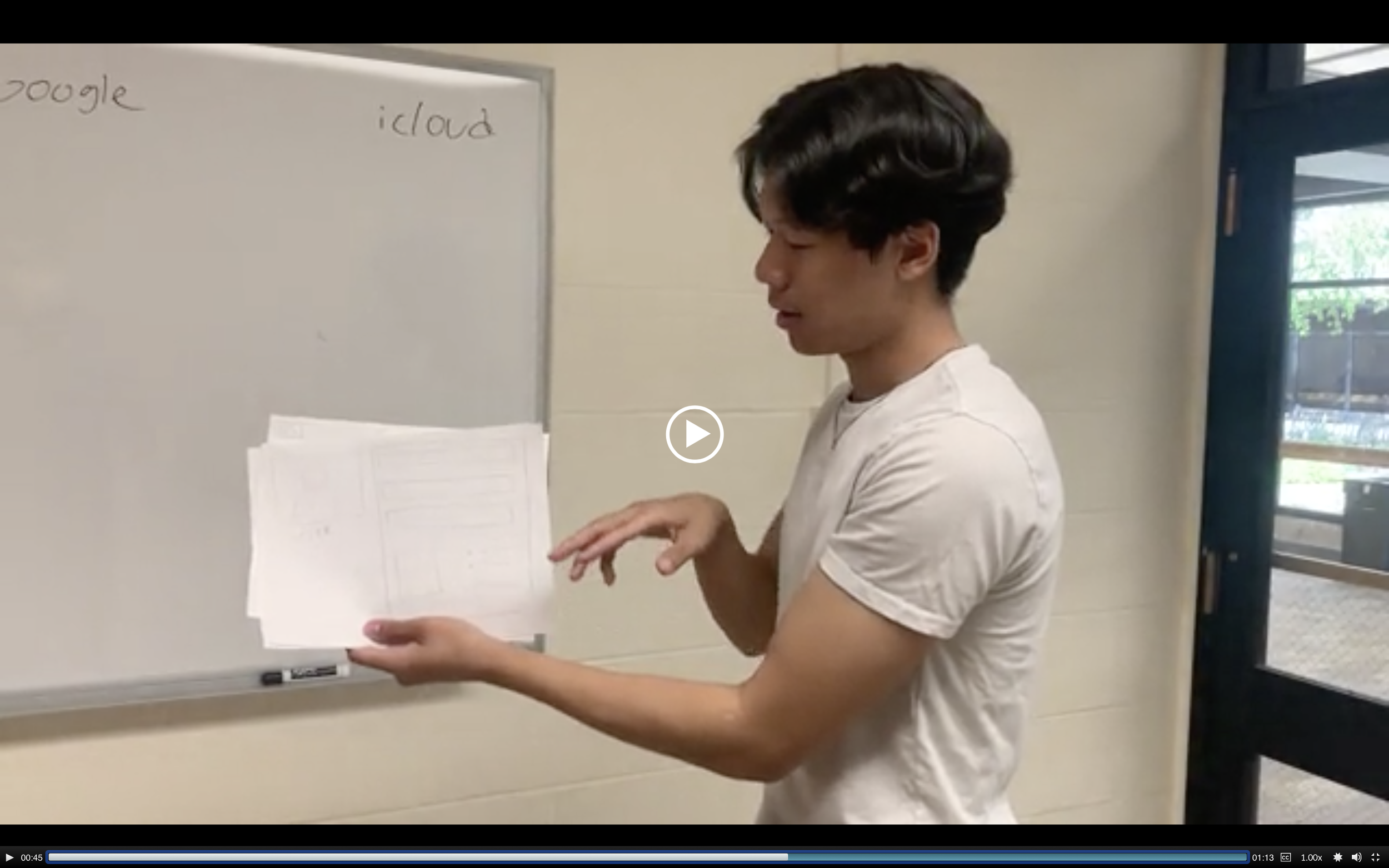The Smart Calendar
Replacing your calendar with a digital workstation.
Overview
In a world where Internet of Things products seem to fulfill many of the major roles in common household objects, the field of technology needs to expand even further into our everyday lives. How do we start this? By creating a product that tracks our every day.
Offices, households, workplaces and classrooms all require the use of a calendar. This can come from an old fashioned calendar we get from the dollar store, presented with tacky artwork to hang, or digital platforms on our laptops, tablets or smartphones. The Smart Calendar delivers a happy medium, digitizing the traditional calendar into a wall-hangable IoT screen, allowing all of these systems to communicate with each other, and most importantly, creates a workstation that manages and documents your life’s daily needs.
Project Type
• Internet of Things Product
• User-Centered Design
• Group Project
• UX Research
Roles
• Product Manager
• UX Designer
• User Testing Observer
Team Members
• Ellis Deng
• Kush Patel
• Mehdi Dinarsaki
Tools
• Adobe XD
• Figma
• Miro
• Google Workspace
• Cisco Packet Tracer
Discover
How do we upgrade current calendar workflows for people trying to manage themselves in work, school and everyday life?
Observe current workflows that people use to document events on their calendars
Identify relationships between analog calendars and digital calendars and generate potential digital interconnections
Integrate an IoT product that can be implemented through various user routines/user types
Brainstorm
Prominent Interview Responses
Our team interviewed a set of 7 people regarding their current process of logging their calendars. We then asked questions regarding the potential product we are creating along with its implied features. Below are recurring responses throughout our interviews that provided incites to our defining process.
“a physical calendar best works to harbor all of my platform’s events”
“keeping up with Canvas, Google Calendar and Apple reminders is overwhelming and creates a possibility to overlook my plans”
“hanging up a digital screen as a virtual calendar will result in the product being on standby most of the time”
“I find myself taking photos of my physical calendar”
“I value being notified for my plans on my phone”
“having a standby voice assistant to activate the calendar, similar to Amazon’s Alexa or Apple’s ‘hey Siri’ would establish easier access”
User Personas
-

Tiffany Christian, 35
Tiffany runs a local shop at her town selling cooking products and kitchenware. She features a calendar at her cashier counter that displays daily deals, specials and events that her store will host. She believes customers will be displayed with special information to raise interest for more store visits and promote certain products.
PAIN POINTS:
• Must do constant editing on her calendar
• Has to look-up further details manually for clarification certain sales she schedules
-
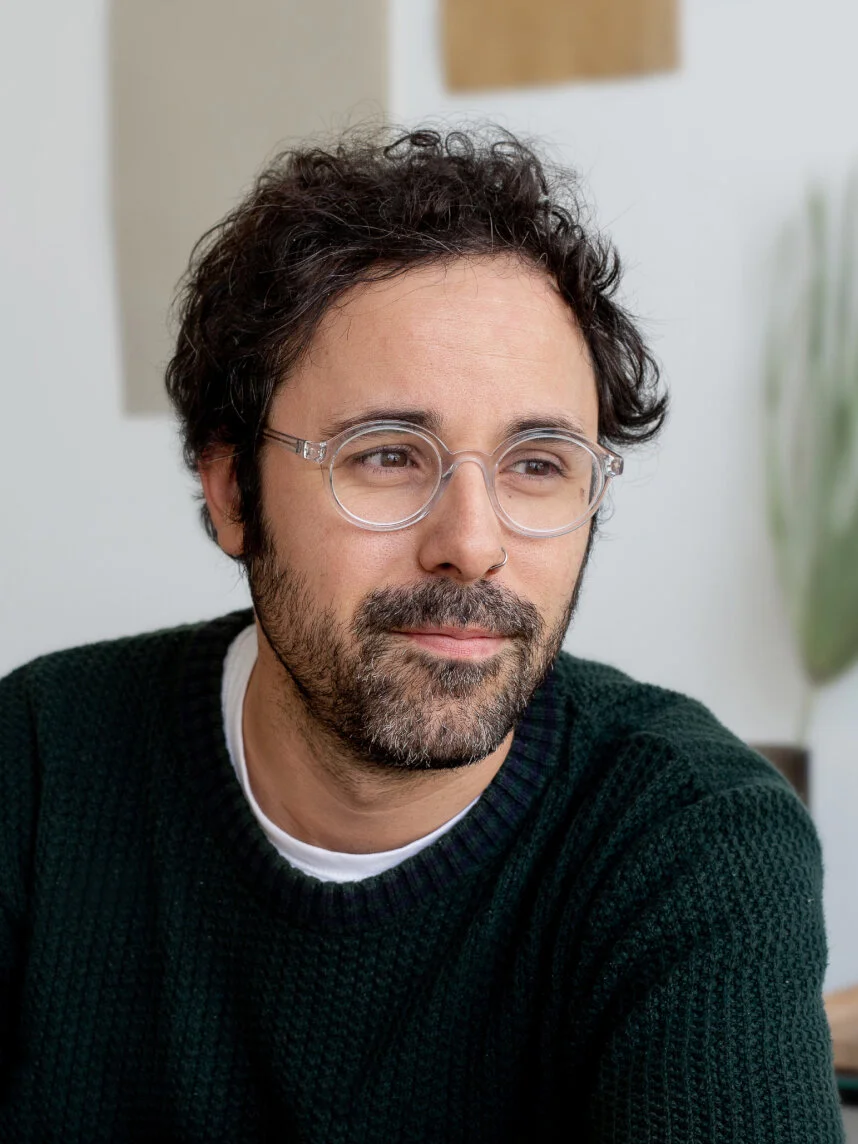
Thomas Malone, 47
As a remote consultant at a data firm, a father of 3 and volunteer at his church, Thomas relies on Google Calendar, Apple reminders and iCloud Calendar to organize his plans. He uses the “Hey Siri” feature to ask for any upcoming plans or events he has planned, and makes use of Google Calendar’s “add to calendar” feature when sorting through business e-mails.
PAIN POINTS:
• Cross-platform overload
• Lack of distinct workflow
• Disorganized planning
-

Nancy Freeman, 23
Nancy is a masters student at her University’s School of Journalism. For extracurriculars, she runs a blog covering her favorite food spots in the city. She is troubled with constantly having to write all of her assignments and scheduled blog posts on her whiteboard calendar. To ensure she is on top of her school work, she double checks her classes due dates on her school’s assignment platform.
PAIN POINTS:
• Redundant entry process of updating calendar
• Has to validate assignments past her physical calendar
Design and Develop
Low-Fidelity Prototypes
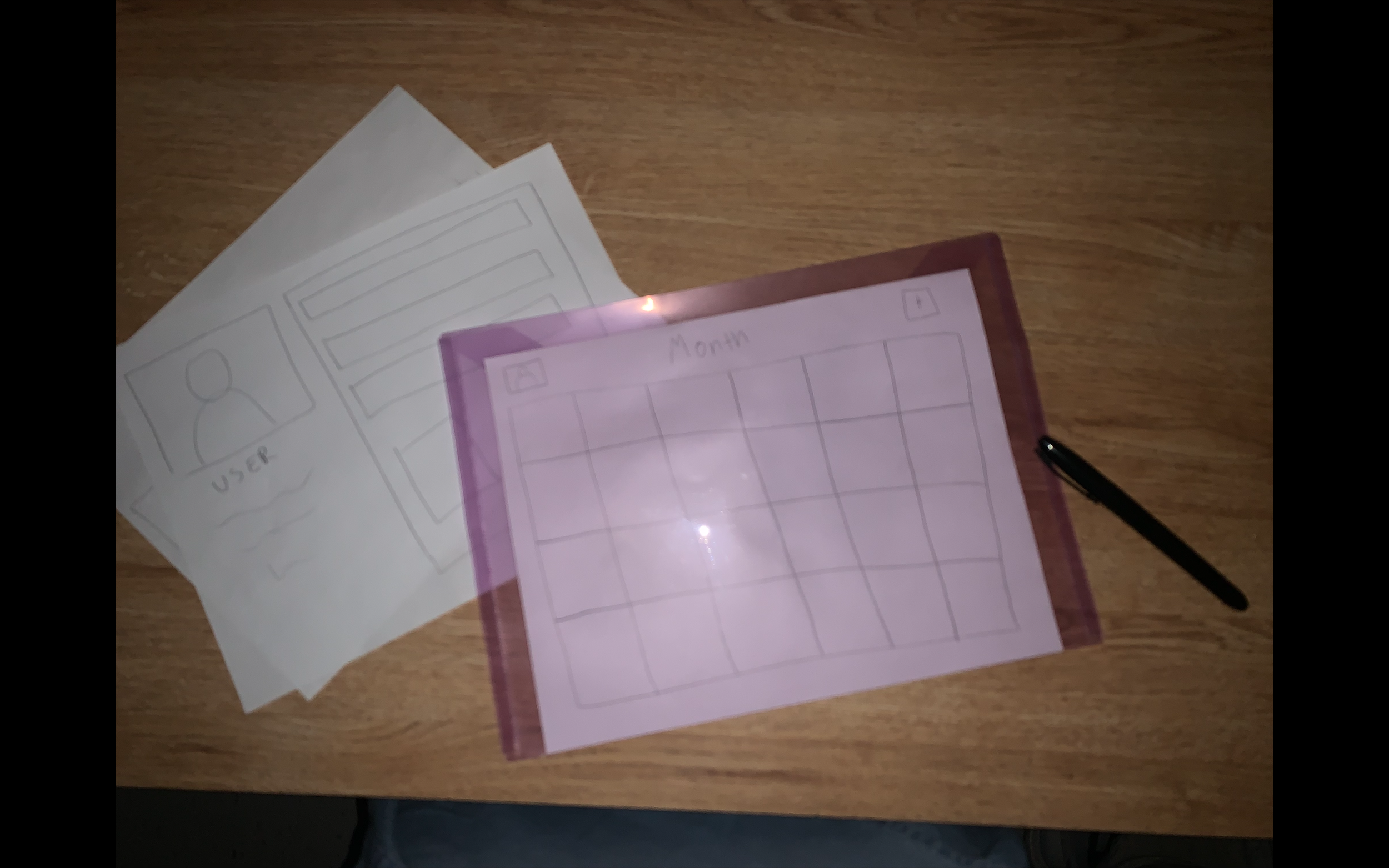
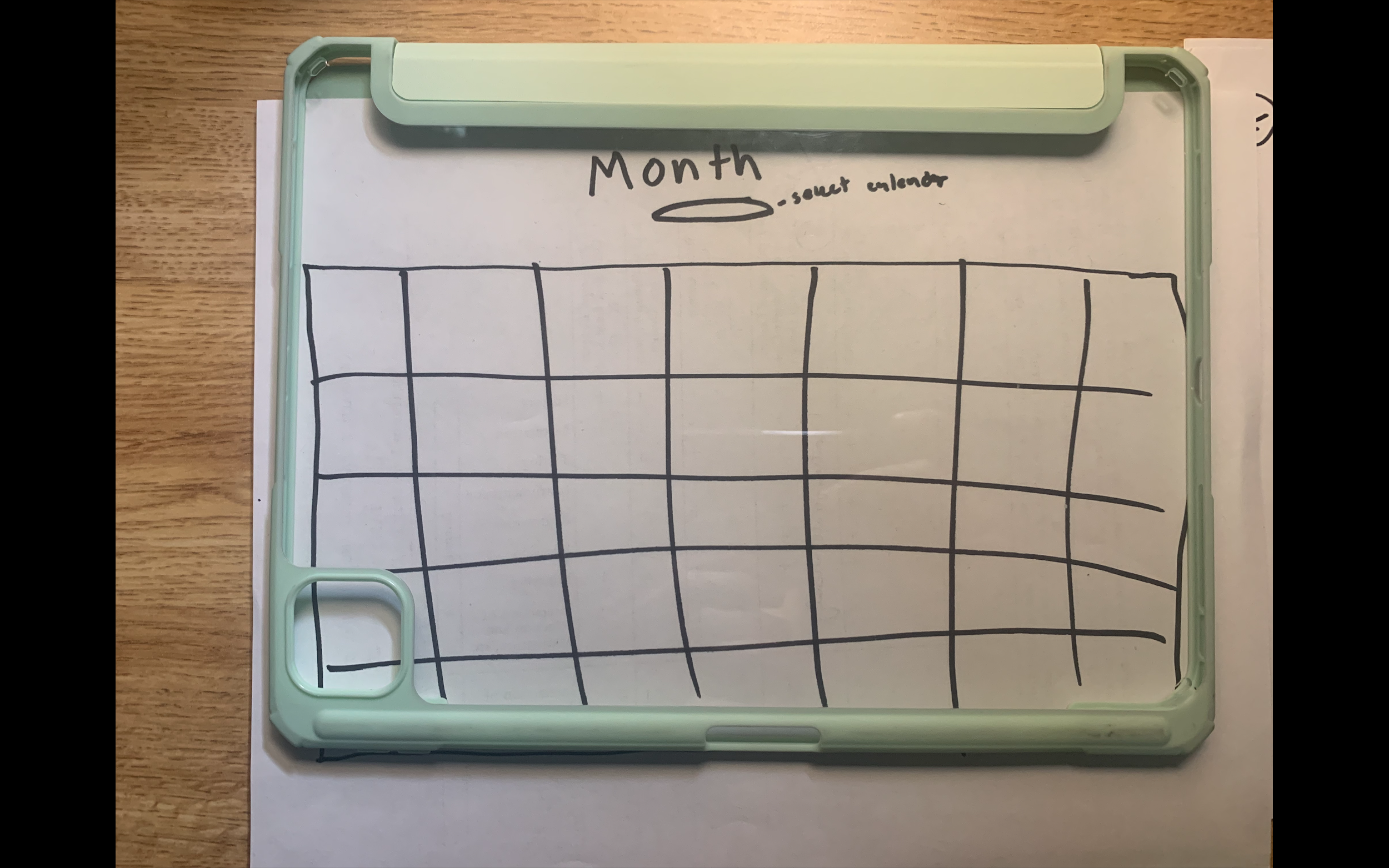
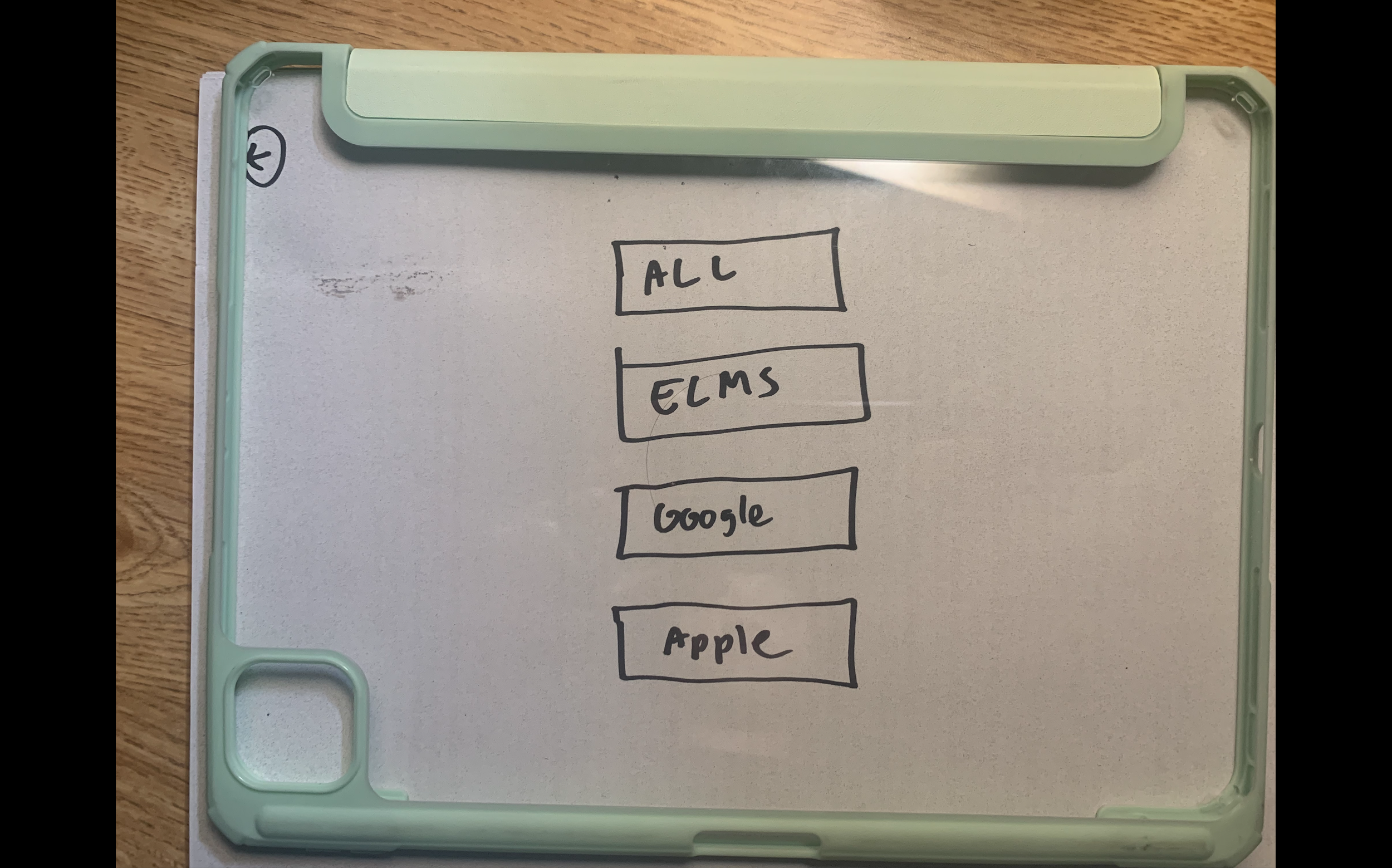

User Testing and Think Aloud
(User Testers did not acknowledge consent of posting observation videos but allowed for posting of screenshots of those videos)
Post Observation Log
Reflection
no standalone dependance on the actual device
look into framing of device screen
non-intrusive design that fits any office
medium fidelity prototype simulation plans:
show more emphasis on screens
color coding / color theory
make elms as accessible as google and icloud
Notice (Insights for Next Iteration)
voice recognition is for the high fidelity prototyping (don’t worry about it)
set up of device connection is tedious
must be confined to ONLY mobile app usage
use of airdrop technology for logging in
this may breach beyond a simple IoT device
make it simple, this is just an interactive calendar
Empathize
make digital skills for set-up on easier than setting up a wireless printer
can have possible information overload
create digestible screen using minimalist data display/previewing with organized entries
what professions will best fit a user story?
scrum/agile situations?
students
business owners
can be used as an information system (might be too complicated for a simple
IoT)
Medium-Fidelity Prototypes
Validate
We user tested with 3 participants. The biggest issue we observed is whether or the product can have primary usage as a standalone system. Being that the screen will be hung on an office wall on most of its usage, operating the product will work best through a complimentary mobile application. Our system will benefit the most with airdrop, cloud and wireless technology. All of our validation approaches will assume with additional software connected to our system.
High-Fidelity Prototypes
Walkthrough
The following is a walkthrough of our high-fidelity prototype. This video includes a breakdown of our discoveries when iterating and user testing from our previous phase.
“With excellent detailing in concept maps and low-fi prototypes perfect for testing with participants, [The IoT Smart Calendar] garners pristine potential from the research conducted.”
- Dennis Frezzo, Former Senior Learning Scientist at Cisco and Senior Lecturer of iSchool’s Human-Center Design
Impact on my UX Journey
After learning about the infrastructures that support front-end structures, I was introduced to the workflow of user-centered design. With the formation of the Internet of Things Calendar, the process of reaching high-fidelity prototypes required one significant operation: User Research. To make justice in considering this work as a “user-centered design,” I needed an understanding of user behaviors and garnering empathy to devise a virtual, standalone calendar. This was achieved through user testing, a practice I learned in this team, and a process that will be essential to all projects I pursued afterwards.


